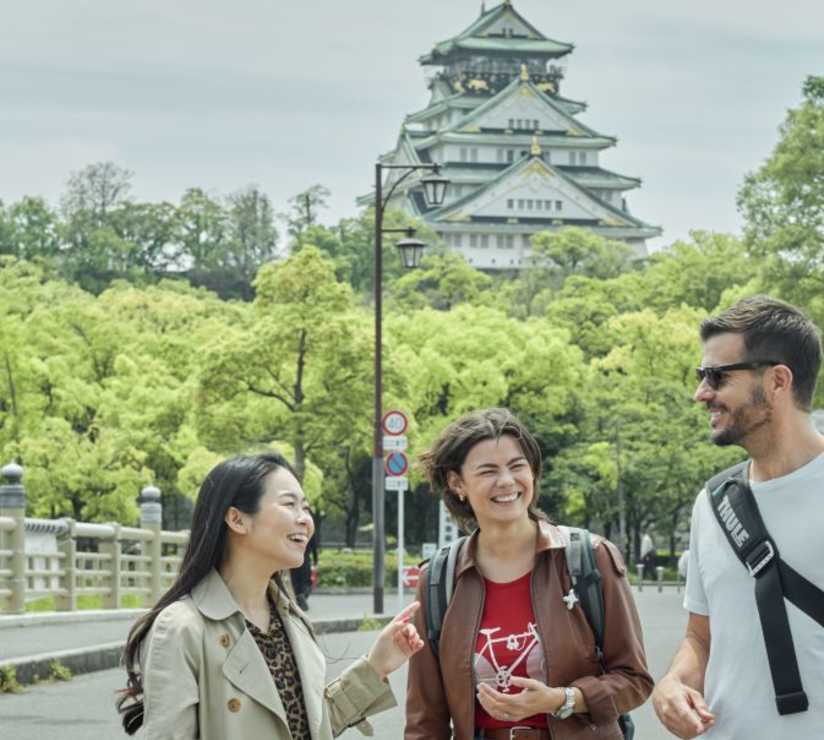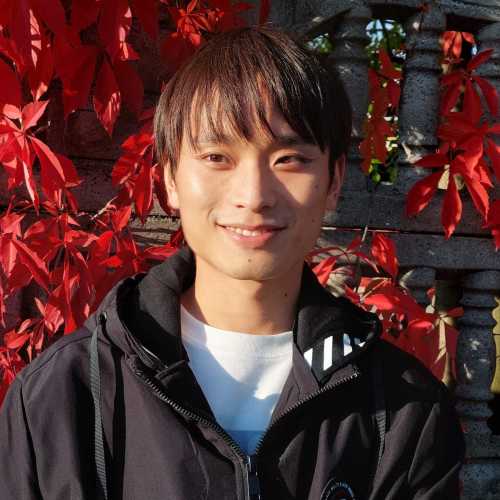Table Of Contents
- The Real Question: What Kind of Traveler Are You?
- Is Osaka Actually Worth Visiting? (Spoiler: Yes, But...)
- How Many Days in Osaka: The Breakdown
- Sample Itineraries: Putting It All Together
- Factors That Affect Your Ideal Trip Length
- Instagrammable Food in Osaka: The Social Media Factor
- The Honest Answer: What's Your Number?
- Practical Planning Considerations
- The Verdict: Your Osaka Timeline
- Final Thoughts: Beyond the Numbers
- Your Osaka Adventure Awaits
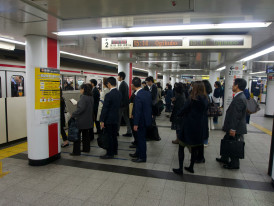
Busy Osaka subway station during rush hour showing the efficiency of the transportation system Photo by Marek Lumi on Unsplash
Tagline: Half local, half skeptical — all Osaka.
Listen, I've been living in Osaka for the better part of a decade, and I still get asked this question more than "Where's the best Takoyaki?" (Though honestly, that's a close second.) The truth is, figuring out how many days in Osaka you need isn't just about ticking boxes on a tourist checklist—it's about understanding what makes this city tick, and more importantly, what makes you tick as a traveler.
"Unlike visiting Tokyo or other cities that compete for your attention through sheer scale, Japan's third-largest city wins you over with personality and authenticity."Osaka isn't like visiting Tokyo or any other cities. It stands out in its own right as Japan's third-largest city.\ \ Transportation Planning
Osaka Amazing Pass: Worthwhile for 2-3 day visits that focus on major attractions. Provides unlimited subway and bus transportation plus discounts on popular tourist sites.
Getting to Osaka: If you're arriving by bullet train from Tokyo or other major cities, you'll arrive at Shin Osaka Station, which connects easily to the city center via local trains. The bullet train is incredibly efficient, though many travelers wonder if the speed is worth the cost. Here's the honest truth: the JR trains experience itself is remarkable, but for budget-conscious travelers, regular express trains cover the same routes for much less money. First timers often splurge on the Japan Rail Pass thinking it's essential, but unless you're covering serious distances across multiple regions, individual tickets might be more economical. The rail pass works well if you're combining Osaka with Tokyo and other distant destinations, but for Kansai-focused trips, local rail pass options provide better value. From Namba station, you can reach most Osaka neighborhoods efficiently, making it an ideal base regardless of how you arrive.
Longer Stays: Regular transportation cards (ICOCA) offer more flexibility and work throughout the Kansai region for day trips.

Split image showing tourist taking photos at popular spot vs. local enjoying quiet moment at traditional cafe
The Real Question: What Kind of Traveler Are You?
Before we dive into the nitty-gritty of how many days you actually need in Osaka, let's be honest about something. Your ideal trip length has less to do with what travel blogs tell you and more to do with whether you're the type of person who plans every minute or the type who discovers hidden gems by getting wonderfully lost.
Are you here to check off the greatest hits and move on? Fair enough. Want to dig deep into local neighborhoods and find that hole-in-the-wall restaurant that doesn't even have an English menu? Also fair. Somewhere in between? Most of us are.
The beauty of Osaka is that it accommodates all types, but it rewards the curious. This isn't a city that reveals all its secrets on the first date.

Lively scene at Kuromon Ichiba Market with vendors and customers interacting, colorful food displays
Is Osaka Actually Worth Visiting? (Spoiler: Yes, But...)
The Skeptic's Take
Look, I'm going to level with you. If you're expecting Osaka to be Japan in miniature, you might be disappointed. It's not going to give you the serene temple experiences of Kyoto or the organized chaos of Tokyo. What it will give you is something arguably more valuable: authenticity.
Osaka is where Japanese people go to let their hair down. It's where business executives from Tokyo come to remember what good food actually tastes like. It's where centuries-old traditions of merchant culture still influence how people interact with strangers (read: they actually talk to you).
What Makes Osaka Special
The city sits at the intersection of several things that make for compelling travel. First, there's the food culture. And I don't just mean "good restaurants"—I mean a city where the local greeting is "Are you eating well?" instead of "How are you?" Second, there's accessibility. Unlike some Japanese destinations that require extensive planning or language skills, Osaka is refreshingly straightforward for international visitors.
Third, and this is where it gets interesting, your Osaka itinerary serves as a perfect base for exploring the broader Kansai region. Within an hour, you can be in ancient Nara feeding deer, exploring the traditional streets of Kyoto, or soaking in hot springs in Arima. The question of how many days in Osaka becomes less about the city limits and more about how you want to structure your entire Kansai experience.
The Cultural Energy Factor
Osaka has something that's increasingly rare in modern Japan: spontaneity. Tokyo runs on schedule precision, and Kyoto moves with ceremonial deliberation. Osaka just... flows. Conversations happen. Street food vendors know your order by the third visit. Festival energy exists even when there's no actual festival happening.
This cultural energy isn't something you can fully appreciate in a rushed visit. It's not a landmark you photograph and move on from. It's something that seeps into your travel experience gradually.
Looking for a private city experience in Osaka?
Explore the city with a local who plans a private day just for you; no groups, no scripts.

Magnificent Himeji Castle in its full white glory against a blue sky, with traditional landscaping in the foreground Photo by HYEWON HWANG on Unsplash
How Many Days in Osaka: The Breakdown
The 1-Day Express (For the Overly Ambitious)
The Reality Check: Planning a one day Osaka itinerary is like trying to understand jazz by listening to a 30-second sample. Technically possible, completely missing the point but you could always save the rest for your next trip.
But if you're genuinely constrained by time, here's how to make it count. Start early at Osaka Castle—not because it's the most authentic experience, but because it's the most efficient way to get historical context. The reconstructed castle might make purists wince, but the views from the top floor and the surrounding park (especially during cherry blossom season) provide good perspective on the city's layout.
From there, head straight to Dotonbori. Yes, it's touristy. Yes, it's crowded. But it's also the concentrated essence of Osaka's personality in a few city blocks. Grab lunch at one of the standing Takoyaki places—not because they're the absolute best in the city, but because they're good enough and the experience of eating standing up while watching the controlled chaos of the district is quintessentially Osakan.
The Evening Push
If you have energy left, end your day in Shinsekai. This neighborhood offers a glimpse of old Osaka that Dotonbori's tourism boom has largely scrubbed away. The Kushikatsu (fried skewers) here comes with strict rules—never double-dip your food in the communal sauce—that provide a fun introduction to local customs.
The Honest Truth: You'll leave having seen your Osaka itinerary plans, but you won't have experienced it. It's like speed dating with a city—you get the highlights reel, but miss the personality.
The 2-Day Minimum (Getting Somewhere)
Two days is where things start getting interesting, and you can save money while getting a much better understanding of the city. It's the minimum amount of time needed to move beyond pure tourism and start to understand why people fall in love with this city.
Day One: Foundation Building Start with the same Osaka castle to Dotonbori progression as the one-day itinerary, but with more breathing room. Actually explore Osaka Castle Park if the weather's decent. The plum groves are spectacular in early spring, and even the regular gardens provide a nice contrast to the urban intensity you're about to dive into.
While Osaka Castle itself is a concrete reconstruction from the 1930s, don't let that diminish its significance. The museum inside Osaka Castle provides essential context about the city's role in Japanese unification, and the views from Osaka Castle's upper floors offer excellent orientation for your upcoming neighborhood explorations. Most importantly, spending time around Osaka Castle grounds helps you understand how this fortress shaped the merchant city that grew around it. The castle's strategic position overlooking the rivers made it the perfect center for the trade networks that still define Osaka today.
In Dotonbori, resist the urge to eat at the first takoyaki stand you see. Walk the length of the main strip first, get oriented, then circle back to wherever looked most appealing. The giant moving crab sign is obligatory for photos, but the real action happens in the side streets where locals grab quick meals between work and evening plans.
Day Two: Beyond the Headlines. This is where the magic happens. Head to Kuromon Ichiba Market in the morning when it's still primarily serving locals rather than tour groups. The market is a working food distribution center that happens to welcome visitors, not a tourist attraction that happens to sell food. That distinction matters for both quality and experience.
Spend your afternoon in either Sumiyoshi or Nippombashi. Sumiyoshi offers one of Japan's most important Shinto shrines in a setting that feels completely separate from the urban energy of central Osaka. Nippombashi, on the other hand, is Osaka's electronics and otaku culture district—less polished than Tokyo's Akihabara but more authentic to how these subcultures actually exist in daily Japanese life.
The Food Evolution: By day two, you should be ready to graduate beyond takoyaki. Try okonomiyaki at a proper restaurant where they cook it in front of you, or find a conveyor belt sushi place that's aimed at locals rather than tourists. The difference in quality is significant.
The 3-Day Sweet Spot (Recommended for Most)
Three days is where the answer to "how many days in Osaka" becomes clear for most travelers. It's enough time to see the major attractions without rushing, experience the food culture beyond the obvious choices, and take a day trip that puts Osaka in broader context.
Days One and Two: Follow the two-day framework above, but with even more flexibility. Take longer meals. Sit in cafes. People watch in parks. Start conversations with shop owners who speak enough English to be curious about where you're from.
Day Three: The Context Day. This is your choice point. You can either go deep into Osaka itself—exploring neighborhoods like Tennoji, Namba, or the artsy areas around Nippombashi—or you can take a day trip that helps you understand how Osaka fits into the broader region.
The Nara day trip is the most popular choice, and for good reason. Thirty minutes by train gets you to Japan's first permanent capital, where deer bow for crackers and some of the country's oldest temples still stand in their original locations. It's a completely different energy from Osaka—contemplative rather than energetic, ancient rather than adaptive.
Alternatively, Kyoto is accessible for a day trip, though it really deserves its own multi-day visit. If you choose this option, focus on one specific area rather than trying to see everything. The Gion district offers traditional architecture and, if you're lucky, geisha sightings. The Fushimi Inari shrine provides thousands of red torii gates winding up a mountainside.
The Kobe Option: Less touristy but equally rewarding is a trip to Kobe. The beef is real, the harbor area is pleasant for walking, and the international history of the city provides an interesting contrast to Osaka's purely Japanese merchant culture.
[Image suggestion: Kobe harbor at sunset with the city lights beginning to twinkle, boats in the foreground]
Kobe harbor at sunset, with the city lights beginning to twinkle, boats in the foreground
The 4-5 Day Deep Dive (For the Curious)
Four to five days is where Osaka itinerary options stop being just a tourist destination and start being a place you temporarily live. This timeline works best for travelers who prefer to understand places rather than simply see them.
The Neighborhood Immersion: With extra time, you can adopt specific neighborhoods. Spend a morning in Sumiyoshi exploring not just the shrine but the local shopping streets, cafes, and residential areas that tourists rarely see. Take the train to outlying areas like Sakai, where traditional crafts are still practiced and the pace of life slows down considerably.
The Seasonal Advantage: Extended stays let you experience Osaka's seasonal rhythms. Spring brings cherry blossoms and outdoor festivals. Summer means evening markets and rooftop beer gardens. Fall offers perfect weather for exploring and incredible seasonal foods. Winter brings illumination displays and hot pot season.
The Relationship Building: This is where Osaka's famous friendliness really pays off. Shopkeepers start recognizing you. Restaurant owners remember your preferences. You develop routines and favorite spots that feel genuinely personal rather than merely touristic.
Day Trip Variety: With more time, you can explore multiple day trip options without feeling rushed. Hit Nara one day, Kyoto another, maybe even venture to Mount Koya for Buddhist temple experiences or Himeji to see Japan's most spectacular original castle.
The Week-Plus Adventure (For True Enthusiasts)
A Osaka itinerary of a week or more transforms the entire travel experience. This isn't just about seeing more things—it's about developing a genuine relationship with the place.
The Local Rhythm: You start shopping at neighborhood markets instead of tourist-focused ones. You discover which train lines are less crowded at different times of day. You find cafes where you can sit for hours without feeling pressure to move along.
The Hidden Gems: With time to wander without agenda, you stumble onto the kind of experiences that don't make it into guidebooks. The tiny bar where the owner speaks no English but makes exceptional cocktails. The public bath where locals gather every evening. The shrine festival that happens to coincide with your visit.
![: Small traditional bar with wooden counter and bottles lining the walls, warm lighting creating intimate atmosphere]](https://images.surferseo.art/963fb9c8-8ae3-4935-8127-ad8a88dc2a8e.jpeg)
The Deeper Day Trips: Extended stays allow for more ambitious excursions. Take the train to Kumano Kodo for ancient pilgrimage trails. Visit the sake brewing region of Nada. Explore the ceramic traditions of Shigaraki. These experiences start to paint a picture of the broader Kansai region's cultural landscape.
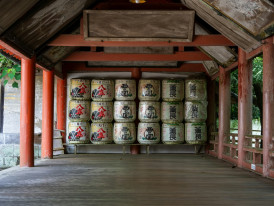
raditional sake brewery in Nada district with large wooden barrels and traditional brewing equipment Photo by Kouji Tsuru on Unsplash
Sample Itineraries: Putting It All Together
The 2-Day Foodie and Culture Intensive
Day 1: Traditional Foundations Morning starts at Sumiyoshi Taisha, one of Japan's most important Shinto shrines and a place where you can witness local spiritual practices without the crowds that gather at more famous temples. The architecture here represents the purest form of Shinto design—no Buddhist influences, no later additions, just clean lines and natural materials.
From Sumiyoshi, head to nearby Sakai to visit traditional knife-making workshops. This isn't just shopping—it's witnessing craftsmanship that dates back centuries and understanding why Japanese kitchen knives are considered the world's best. Even if you don't buy anything, watching a master craftsman work is mesmerizing.
Lunch should happen at a local okonomiyaki restaurant in Sakai, where you'll likely be the only non-Japanese customer. The food will be better than what you'll find in tourist areas, and the experience provides a glimpse into how locals actually eat these dishes.
Day 2: Modern Energy and Street Food Culture Start in Kuromon Market early, when vendors are setting up and the energy is focused on serving local customers rather than entertaining tourists. This is when you'll find the best quality and the most authentic interactions.
Spend your afternoon in Dotonbori, but approach it systematically. Try takoyaki at three different stands to understand the variations in style and quality. Sample imagawayaki (filled pancakes) from a traditional vendor. Find a standing bar for drinks and conversation with other travelers and locals.
Evening should end in Shinsekai for kushikatsu, but pay attention to the neighborhood around the restaurants. This area represents old Osaka in a way that the more polished tourist districts don't, and walking through the residential streets provides context for how the city has evolved.
The 3-Day Balanced Explorer
Day 1: Historical Context. Begin at Osaka Castle, but spend time in the surrounding park and museum to understand the city's role in Japanese unification and merchant culture development. The castle itself is a reconstruction, but the historical information it contains is comprehensive and helps frame everything else you'll see.
Day 2: Cultural Immersion. Dedicate this day to understanding Osaka's cultural personality. Start in Kuromon Market, move through Dotonbori at a leisurely pace, explore the back streets of Namba for local bars and restaurants, and end in Shinsekai for the full kushikatsu experience.
Day 3: Regional Context (Day Trip). Choose between Nara for ancient capital experiences with deer and temples, or Kyoto for traditional architecture and cultural sites. Both provide important context for understanding how Osaka fits into the broader Kansai region's cultural landscape.
The 5-Day Osaka Plus Extended Region
Days 1-3: Follow the three-day balanced itinerary above.
Day 4: Kobe Adventure Take the train to Kobe for a completely different perspective on Kansai culture as part of your Osaka itinerary. Visit the sake district of Nada to understand Japanese brewing traditions, explore the harbor area for international historical context, and yes, try the beef that made the city famous worldwide.
Day 5: Artisan Culture Visit Sakai for traditional crafts, then spend the afternoon in Osaka's artisan districts learning about everything from textile dyeing to pottery making. This day provides insight into the creative culture that underlies Osaka's merchant traditions.

Train platform showing direction signs for various Kansai destinations including Kyoto, Nara, and Kobe
Factors That Affect Your Ideal Trip Length
Seasonal Considerations
Spring (March-May): Cherry blossom season extends ideal visit length because outdoor activities become much more appealing. Parks that might be skippable in winter become essential stops. Festival season also kicks into high gear, providing cultural experiences that aren't available year-round.
Summer (June-August): Hot and humid weather might actually shorten your ideal stay, as outdoor activities become less comfortable. However, summer festivals and outdoor food markets provide unique experiences. Rooftop beer gardens become essential rather than optional.
Fall (September-November): Perfect weather extends outdoor exploration time. Autumn leaves provide spectacular backdrops for temple visits. Seasonal foods like persimmons and mushrooms appear in restaurants. This is probably the best season for extended stays.
Winter (December-February): Cold weather shortens walking time but creates opportunities for hot springs day trips and seasonal illumination displays. Indoor activities like museums, department store food floors, and cozy restaurants become more appealing.
Travel Goals and Interests
Theme Park Enthusiasts: Universal Studios Japan can easily consume 1-2 days, especially if you're interested in the Harry Potter and Nintendo areas. This significantly affects how many days in Osaka you'll need for other activities.
Food Culture Deep Divers: Serious food enthusiasts could spend a week just exploring different neighborhood food scenes, taking cooking classes, and visiting specialty markets. The city's reputation as "Japan's kitchen" isn't marketing hyperbole.
History and Culture Focused: Traditional culture enthusiasts will want extra time for temple visits, traditional craft workshops, and cultural performances. However, they might prefer to split time between Osaka and nearby Kyoto or Nara.
Shopping Enthusiasts: Osaka's shopping districts each have distinct personalities, from luxury department stores to quirky vintage shops to electronics markets. Serious shoppers need extra time.
Nearby Destinations Impact
Kyoto Proximity: Many travelers try to split time between Osaka and Kyoto, which are only 30 minutes apart by train. This proximity can either extend your total regional stay or reduce time spent in each individual city.
Nara Day Trip Factor: The ease of visiting Nara as a day trip from Osaka might influence travelers to use Osaka as a base for broader regional exploration rather than focusing intensively on the city itself.
Airport Considerations: Kansai International Airport's location makes Osaka a natural arrival or departure point for broader Japan travel, which might constrain total available time. So keep Kansai international airport and direct flights in mind when deciding how many days you want to spend in Osaka.
What if your day in Osaka was planned by someone who knows it — and you?
City Unscripted matches you with a local host who creates a private experience based on your interests, not a set route.

Artistic seasonal Japanese sweets (wagashi) arranged on traditional ceramic plates with tea ceremony elements
Instagrammable Food in Osaka: The Social Media Factor
Let's be honest about something: part of modern travel involves documenting the experience for social media. When you visit Osaka, it makes this easy because the food culture here is inherently photogenic, but there's a difference between tourist-focused "Instagrammable food in Osaka" and genuinely great food that happens to look amazing.
The Instagram Hotspots: Dotonbori offers endless opportunities for colorful food photography. The giant takoyaki sign, the moving crab, the neon-lit streets full of food vendors—it's all designed to look spectacular in photos. And honestly, there's nothing wrong with that. These spots became famous because they genuinely represent something about Osaka's food culture.
Beyond the Obvious: But the real Instagrammable food when you visit Osaka happens in less obvious places. The perfectly arranged bento boxes at neighborhood shops. The artistic presentation of kaiseki meals at traditional restaurants. The beautiful chaos of Kuromon Market's seafood displays.
The Wagyu Situation: Kobe beef gets all the attention, but Osaka has its own premium wagyu traditions. The marbling on properly prepared Osaka beef creates natural art on the plate. Just be prepared for the prices that come with this level of quality.
Seasonal Specialties: The most photogenic foods change with the seasons. Spring brings delicate cherry blossom-themed sweets. Summer offers colorful shaved ice and festival foods. Fall showcases gorgeous persimmon and chestnut preparations. Winter brings artistic hot pot presentations.
The Technical Side: Good food photography in Osaka restaurants can be challenging due to lighting and space constraints. Many traditional places are small and dimly lit. The best Instagram shots often happen at market stalls and street food vendors where natural light and colorful displays create ideal conditions.
The Cultural Balance: While documenting your food experiences is fun and natural, remember that some restaurants prefer quiet appreciation over photography. Pay attention to the atmosphere and other diners. When in doubt, ask permission.

Contemplative traveler sitting in a traditional Osaka park or garden, journal in hand, representing thoughtful trip planning Photo by Syadza Salsabyla on Unsplash
The Honest Answer: What's Your Number?
After living here for years and talking to hundreds of travelers about their Osaka experiences, I've noticed patterns in who thrives with different trip lengths.
The 2-Day Crowd: These are typically travelers on broader Japan trips who want to experience Osaka's highlights without deep immersion. They often have tight schedules and specific must-see lists. Two days' work if you're efficient and prioritize well.
The 3-Day Sweet Spot: This group includes most successful Osaka visitors. Three days provide enough time to see major attractions, experience the food culture meaningfully, and take one substantial day trip. It's enough time to feel like you've genuinely visited Osaka rather than just passing through.
The 4-5 Day Explorers: These travelers usually fall into two categories: those who use Osaka as a base for regional exploration, and those who prefer slow travel and neighborhood immersion. Both approaches work well with this timeline.
The Week-Plus Adventurers: Usually either food enthusiasts, culture students, or travelers who've been to Japan before and want deeper experiences. This timeline allows for genuine local relationships and discovery of non-tourist experiences.
Making the Decision
Your ideal answer to "how many days in Osaka" depends on honest self-assessment:
- How important is efficiency versus immersion in your travel style in your Osaka itinerary?
- Are you planning to visit other parts of Japan on this trip?
- How much does food culture factor into your travel interests?
- Do you prefer packed itineraries or leisurely exploration?
- Is this your first time in Japan, or do you have previous context?
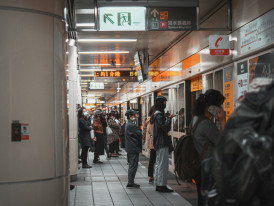
Busy Osaka subway station during rush hour showing the efficiency of the transportation system Photo by Lisanto 李奕良 on Unsplash
Practical Planning Considerations
Accommodation Strategy
2-3 Days: Central location is crucial for shorter stays. Dotonbori area offers convenience but expect noise and tourist crowds. Namba provides good access to transportation and attractions with slightly less chaos.
4+ Days: Consider staying in quieter neighborhoods like Sumiyoshi or Tennoji that offer better value and more authentic daily experiences while maintaining good transportation access.
Transportation Planning
Osaka Amazing Pass: Worthwhile for 2-3 day visits that focus on major attractions. Provides unlimited subway and bus transportation plus discounts on popular tourist sites.
Getting to Osaka: If you're arriving by bullet train from Tokyo or other major cities, you'll arrive at Shin Osaka Station, which connects easily to the city center via local trains. The train is incredibly efficient, though many travelers wonder if the speed is worth the cost. Here's the honest truth: the B train experience itself is remarkable, but for budget-conscious travelers, regular express trains cover the same routes for much less money. First timers often splurge on the Japan Rail Pass thinking it's essential, but unless you're covering serious distances across multiple regions, individual tickets might be more economical. The rail pass works well if you're combining just Osaka with Tokyo and other distant destinations, but for Kansai-focused trips, local rail pass options provide better value. From Namba station, you can reach most Osaka neighborhoods efficiently, making it an ideal base regardless of how you arrive.
Longer Stays: Regular transportation cards (ICOCA) offer more flexibility and work throughout the Kansai region for day trips and is for sale throughout Osaka and at Kansai airport.
Budget Implications
Shorter Stays: Higher per-day costs due to less efficient accommodation and meal planning. Tourist-focused restaurants and activities tend to be more expensive.
Longer Stays: Daily costs decrease as you discover local prices, neighborhood markets, and more affordable dining options.
Language Considerations
Brief Visits: Focus on tourist areas where English support is readily available. Download translation apps and learn basic food-related phrases.
Extended Stays: Invest time in learning basic Japanese phrases. Local interactions become much richer with minimal language ability, and many Osakans appreciate the effort.
Tip
We match you with the right host, not just any guide.Want to experience the real Osaka with someone who lives there?
A fully private experience, planned and led by a local host who tailors the day to you

Diverse group of travelers of different ages and backgrounds enjoying food together at a lively Osaka restaurant, representing the universal appeal of the city Photo by Ambroise NICOLAO on Unsplash
The Verdict: Your Osaka Timeline
After all this analysis, here's my honest recommendation for how many days in Osaka you should plan:
For First-Time Japan Visitors: 3 days minimum. This provides enough time to understand Osaka's unique character without feeling rushed, plus allows for one substantial day trip to put the city in a broader Japanese context.
For Japan Veterans: 2 days might be sufficient if you're comfortable with Japanese travel and have specific goals. Alternatively, 5+ days works well if you want to use just Osaka as a base for deeper regional exploration.
For Food Enthusiasts: 4-5 days minimum. The food culture here is deep enough to sustain extended exploration, and you'll want time to discover neighborhood gems beyond the famous tourist spots.
For Culture Seekers: 5-7 days travel time works well, splitting time between Osaka itself and day trips to historically significant nearby destinations like Nara, Kyoto, and Mount Koya.
For Slow Travelers: A week or more allows you to develop genuine local connections and discover experiences that don't make it into guidebooks.
Final Thoughts: Beyond the Numbers
The question of how many days in Osaka ultimately isn't about optimization—it's about intention. This city rewards curiosity, patience, and appetite (both literal and metaphorical). It's a place where the best experiences often happen when you're not actively seeking them.
![Sunset view over Osaka from a high vantage point, showing the sprawling city with mountains in the distance, golden light creating a sense of possibility]](https://images.surferseo.art/0322a3f7-c6e7-476d-bc23-cd77cf7372df.jpeg)
I've seen travelers have life-changing experiences in Osaka in just two days, and I've seen others spend a week and leave feeling like they barely scratched the surface. The difference usually comes down to approach rather than duration.
Come hungry—for food, for experience, for connection. Come curious about how this merchant city evolved into a modern cultural hub. Come ready to discover that the best takoyaki might be at a stand with no English sign, served by someone who remembers your order by the third visit.

Welcome scene at Osaka train station or airport with travelers arriving, luggage in hand, looking excited about their upcoming adventure Photo by Charles Gao on Unsplash
Your Osaka Adventure Awaits
Whether you ultimately decide on two days or two weeks, Osaka will meet you where you are. The city's famous merchant hospitality isn't just a historical legacy—it's a living tradition that welcomes travelers who come with genuine interest and respect as part of Japanese culture.
What matters is matching your timeline to your travel goals and personality. Use this guide as a framework, but trust your instincts about what kind of experience you're seeking.
Ready to start planning your visit to Osaka adventure and can't wait to get to Kansai airport? Our comprehensive city guides cover everything from hidden neighborhood gems to seasonal travel tips that help you make the most of however many days you choose to visit Japan's most welcoming city.
What's your ideal Osaka timeline? Share your travel plans and questions in the comments below—we love hearing from fellow travelers and helping you create the perfect Kansai adventure.
Ready to plan your perfect day in Osaka?
Start your experienceWhat if your day in Osaka was planned by someone who knows it — and you?
City Unscripted matches you with a local host who creates a private experience based on your interests, not a set route.
Want to experience the real Osaka with someone who lives there?
A fully private experience, planned and led by a local host who tailors the day to you
